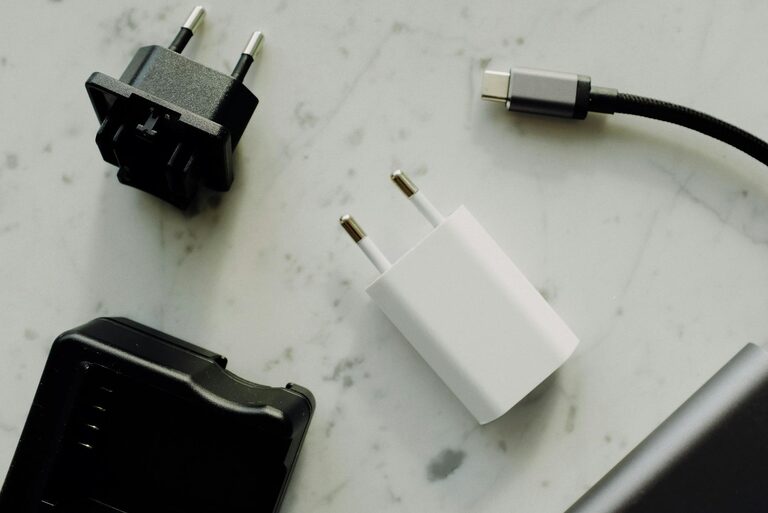Creating a dedicated charging station for your devices is a smart way to keep your home or office organized and your gadgets powered up. With multiple devices like smartphones, tablets, wireless earbuds, and smartwatches all needing frequent charging, chaos can easily result without a plan. In this guide, you’ll learn how to set up a practical and neat charging station tailored to your needs.
Why Set Up a Charging Station?
Before diving into the setup, it’s useful to understand the benefits of having a centralized charging spot:
– Reduces clutter: No more tangled cords spread across rooms.
– Saves time: Always know where to plug in and retrieve your devices.
– Enhances safety: Minimizes risks of damage or tripping over cables.
– Improves device longevity: Proper placement and quality chargers can contribute to battery health.
Step 1: Choose the Right Location
Selecting an ideal location is key to a successful charging station.
Consider Accessibility
Place your station where devices are commonly used or stored. Popular spots include:
– Living room side table
– Bedroom nightstand or dresser
– Home office desk
– Kitchen counter (if you charge devices there)
Ensure Power Availability
The spot should be near enough to a power outlet to plug in your chargers. Avoid using extension cords if possible, to keep things neat and safe.
Check for Ventilation
Devices can get warm while charging, so choose a location with good airflow and avoid enclosing chargers tightly.
Step 2: Gather Supplies
Once you’ve chosen your location, assemble the items you’ll need.
Charging Hardware
– Multi-port USB charger: Allows charging multiple devices simultaneously with fewer plugs.
– Fast chargers: For quick power-ups, especially for smartphones and tablets.
– Wireless charging pads or stands: Optional but convenient for compatible devices.
Organizational Tools
– Cable organizers: Clips, ties, or sleeves to keep cords untangled.
– Charging station box or dock: Designed to hold devices upright while charging.
– Small trays or containers: For earbuds, charging adapters, and accessories.
Additional Items
– Power strip with surge protection: Keeps equipment safe from electrical spikes.
– Labels: To mark cables or chargers (optional but helpful).
Step 3: Plan Your Layout
Think about how many devices you typically charge and their sizes.
– Assign spots for each device type (phone, tablet, smartwatch).
– If possible, position devices so screens or controls remain visible.
– Consider cable lengths to avoid stretching or tangling.
Sketching a rough layout can help visualize.
Step 4: Set Up and Organize Cables
Cable management is one of the most challenging parts but makes a big difference.
Tips for Organizing
– Use short, appropriate-length cables; avoid excess slack.
– Bundle cables using Velcro straps or twist ties.
– Direct cables through holes or guides in your charging dock or station box.
– Keep USB ports and chargers grouped together to minimize clutter.
Consider Wireless Options
Devices compatible with Qi wireless charging can cut down on cable mess. Adding a wireless charging pad streamlines the station.
Step 5: Assemble the Station
Place your multi-port charger on or inside your chosen furniture. Attach cable organizers to keep wires secured.
Arrange devices neatly:
– Prop phones or tablets upright to monitor notifications.
– Keep smaller devices like earbuds in a dedicated container.
Plug everything in and test to ensure each device charges correctly.
Step 6: Maintain Your Charging Station
Regular upkeep keeps your station efficient:
– Remove dust and debris.
– Check cables for fraying or damage.
– Update chargers or replace cables as needed.
– Periodically reorganize as your device collection or needs change.
Additional Tips
– Safety first: Never overload power strips or outlets.
– Label cables to avoid confusion — helpful if the station is shared among family members.
– Optimize device settings: Enable fast charging or battery-friendly modes where available.
– Use timers or smart plugs to limit charging time and conserve energy.
Conclusion
A well-designed charging station minimizes clutter and keeps your devices ready whenever you need them. By choosing the right location, using quality chargers, and staying on top of cable management, you can transform your charging routine into an organized, hassle-free experience. Whether for home or office, a charging station is a simple upgrade that pays off in convenience and peace of mind. Happy charging!

